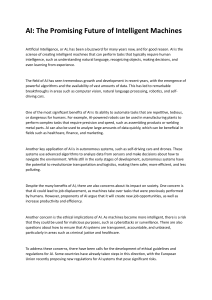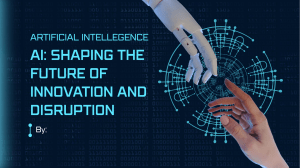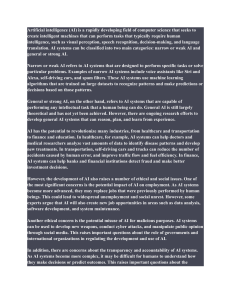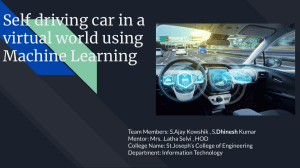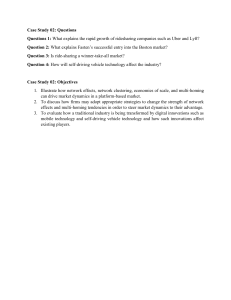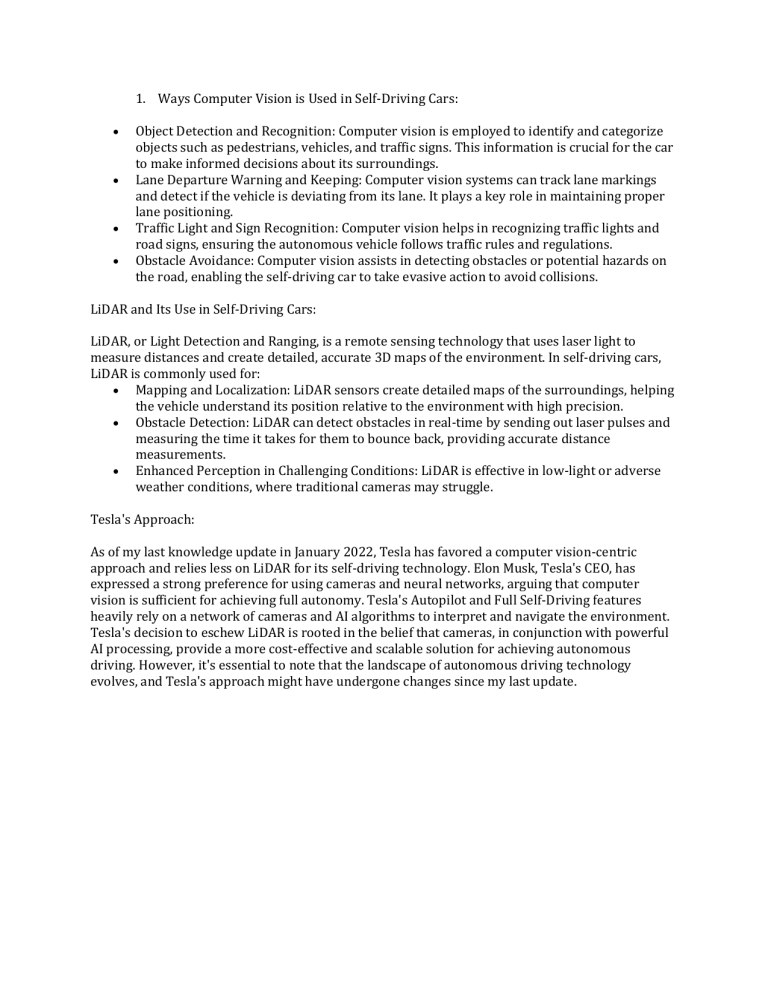
1. Ways Computer Vision is Used in Self-Driving Cars: Object Detection and Recognition: Computer vision is employed to identify and categorize objects such as pedestrians, vehicles, and traffic signs. This information is crucial for the car to make informed decisions about its surroundings. Lane Departure Warning and Keeping: Computer vision systems can track lane markings and detect if the vehicle is deviating from its lane. It plays a key role in maintaining proper lane positioning. Traffic Light and Sign Recognition: Computer vision helps in recognizing traffic lights and road signs, ensuring the autonomous vehicle follows traffic rules and regulations. Obstacle Avoidance: Computer vision assists in detecting obstacles or potential hazards on the road, enabling the self-driving car to take evasive action to avoid collisions. LiDAR and Its Use in Self-Driving Cars: LiDAR, or Light Detection and Ranging, is a remote sensing technology that uses laser light to measure distances and create detailed, accurate 3D maps of the environment. In self-driving cars, LiDAR is commonly used for: Mapping and Localization: LiDAR sensors create detailed maps of the surroundings, helping the vehicle understand its position relative to the environment with high precision. Obstacle Detection: LiDAR can detect obstacles in real-time by sending out laser pulses and measuring the time it takes for them to bounce back, providing accurate distance measurements. Enhanced Perception in Challenging Conditions: LiDAR is effective in low-light or adverse weather conditions, where traditional cameras may struggle. Tesla's Approach: As of my last knowledge update in January 2022, Tesla has favored a computer vision-centric approach and relies less on LiDAR for its self-driving technology. Elon Musk, Tesla's CEO, has expressed a strong preference for using cameras and neural networks, arguing that computer vision is sufficient for achieving full autonomy. Tesla's Autopilot and Full Self-Driving features heavily rely on a network of cameras and AI algorithms to interpret and navigate the environment. Tesla's decision to eschew LiDAR is rooted in the belief that cameras, in conjunction with powerful AI processing, provide a more cost-effective and scalable solution for achieving autonomous driving. However, it's essential to note that the landscape of autonomous driving technology evolves, and Tesla's approach might have undergone changes since my last update. 2. The ethical considerations in autonomous vehicles pose complex challenges that require careful consideration. Determining the moral code for self-driving cars involves a combination of stakeholders, including regulators, industry experts, ethicists, and the public. Here are some perspectives on responsibility and ethical decision-making in selfdriving cars: Shared Responsibility: Responsibility for accidents in self-driving cars should be shared among various entities. The car manufacturer, software developers, regulatory bodies, and even the owner of the vehicle may each bear a degree of responsibility. Regulatory Standards: Governments and regulatory bodies play a crucial role in setting standards for the ethical behavior of autonomous vehicles. They can establish guidelines and regulations that define the acceptable ethical parameters for decision-making in different scenarios. Manufacturer Accountability: Car manufacturers and software developers must take responsibility for designing and deploying systems that prioritize safety and adhere to ethical standards. They should be held accountable for ensuring that their technology operates within established ethical boundaries. Driver and Owner Accountability: While the human occupants of a self-driving car may not be actively controlling the vehicle, the owner or operator of the vehicle may still bear some responsibility. For instance, if the vehicle is not properly maintained, updated, or used inappropriately, the owner might share in the accountability. Transparent Decision-Making: The decision-making algorithms within autonomous vehicles should be transparent and subject to scrutiny. It's essential for the public to understand how these systems make ethical choices to foster trust and acceptance. Justification: Assigning responsibility to multiple stakeholders recognizes the collaborative nature of developing and deploying autonomous technology. While manufacturers must ensure the safety and ethical programming of their systems, regulatory bodies need to establish clear guidelines. Drivers and owners should also play a role in maintaining their vehicles and adhering to usage guidelines. Transparent decision-making is crucial to address concerns related to accountability and public trust. If the decision-making processes of self-driving cars are open and understandable, it can help society accept and adapt to the technology. Ultimately, a holistic approach that involves collaboration among industry, regulators, and the public is necessary to establish a comprehensive and widely accepted framework for the ethical behavior of autonomous vehicles. 3. Personal Concern: Yes, the collection and storage of vast amounts of personal data by self-driving cars raise valid concerns. Privacy is a fundamental right, and the potential exposure of information about a person's location, communication, and interactions within the vehicle can be intrusive. As a user, it is concerning that sensitive data could be vulnerable to unauthorized access, misuse, or even hacking, leading to privacy breaches. The risk of data exploitation and the need for robust security measures are critical considerations in the adoption of autonomous vehicles. Use of Data in Legal Proceedings: In the event of an accident, the data collected by self-driving cars can be invaluable for insurance purposes, civil liability trials, and criminal investigations. This data can provide an accurate and unbiased account of the events leading up to the accident, offering crucial evidence for determining fault, assessing liability, and understanding the circumstances surrounding the incident. Insurance Purposes: Access to data from self-driving cars can facilitate a quicker and fairer resolution of insurance claims. Objective information about vehicle speed, surroundings, and actions taken by the autonomous system can help insurers determine responsibility accurately. Civil Liability Trials: Data from self-driving cars can serve as an impartial witness in civil liability trials, offering an unbiased account of the events. This can contribute to fair legal proceedings and ensure that parties involved are held accountable based on accurate information. Criminal Investigations: In the case of serious accidents or criminal activities involving selfdriving cars, the data can aid law enforcement in their investigations. This information can be critical for reconstructing the events and understanding contributing factors. While utilizing this data for legal purposes is justifiable, it is essential to implement stringent privacy and security measures to protect individuals' rights. Striking a balance between privacy concerns and the need for accurate information in legal proceedings is crucial for establishing a trustworthy framework for the integration of self-driving cars into society.

